�
Geir Evensen
Data Assimilation
Geir Evensen
Data Assimilation
The Ensemble Kalman Filter
With 63 Figures
�
PROF. GEIR EVENSEN
Hydro Research Centre, Bergen
PO Box 7190
N 5020 Bergen
Norway
and
Mohn-Sverdrup Center for Global Ocean Studies
and Operational Oceanography
at Nansen Environmental and Remote Sensing Center
Thormølensgt 47
N 5600 Bergen
Norway
e-mail:
Geir.Evensen@hydro.com
Library of Congress Control Number: 2006932964
3-540-38300-0-X Springer Berlin Heidelberg New York
ISBN-10
978-3-540-38300-0 Springer Berlin Heidelberg New York
ISBN-13
This work is subject to copyright. All rights are reserved, whether the whole or part of the
material is concerned, specifically the rights of translation, reprinting, reuse of illustrations,
recitation, broadcasting, reproduction on microfilm or in any other way, and storage in data
banks. Duplication of this publication or parts thereof is permitted only under the provisions of
the German Copyright Law of September 9, 1965, in its current version, and permission for
use must always be obtained from Springer-Verlag. Violations are liable to prosecution under
the German Copyright Law.
Springer is a part of Springer Science+Business Media
springer.com
© Springer-Verlag Berlin Heidelberg 2007
The use of general descriptive names, registered names, trademarks, etc. in this publication
does not imply, even in the absence of a specific statement, that such names are exempt
from the relevant protective laws and regulations and therefore free for general use.
Cover design: Erich Kirchner
Typesetting: camera-ready by the author
Production: Christine Adolph
Printing: Krips bv, Meppel
Binding: Stürtz AG, Würzburg
Printed on acid-free paper 30/2133/ca 5 4 3 2 1 0
�
To Tina and Endre
�
Preface
The aim of this book is to introduce the formulation and solution of the
data assimilation problem. The focus is mainly on methods where the model
is allowed to contain errors and where the error statistics evolve through
time. So-called strong constraint methods and simple methods where the error
statistics are constant in time are only briefly explained, and then as special
cases of more general weak constraint formulations.
There is a special focus on the Ensemble Kalman Filter and similar meth-
ods. These are methods which have become very popular, both due to their
simple implementation and interpretation and their properties with nonlinear
models.
The book has been written during several years of work on the development
of data assimilation methods and the teaching of data assimilation methods to
graduate students. It would not have been completed without the continuous
interaction with students and colleagues, and I particularly want to acknowl-
edge the support from Laurent Bertino, Kari Brusdal, Fran¸cois Counillon,
Mette Eknes, Vibeke Haugen, Knut Arild Lisæter, Lars Jørgen Natvik, and
Jan Arild Skjervheim, with whom I have worked closely for several years.
Laurent Bertino and Fran¸cois Counillon also provided much of the material
for the chapter on the TOPAZ ocean data assimilation system. Contributions
from Laurent Bertino, Theresa Lloyd, Gordon Wilmot, Martin Miles, Jennifer
Trittschuh-Vall`es, Brice Vall`es and Hans Wackernagel, on proof-reading parts
of the final version of the book are also much appreciated.
It is hoped that the book will provide a comprehensive presentation of the
data assimilation problem and that it will serve as a reference and textbook
for students and researchers working with development and application of
data assimilation methods.
Bergen, June 2006
Geir Evensen
�
Contents
List of symbols . . . . . . . . . . . . . . . . . . . . . . . . . . . . . . . . . . . . . . . . . . . . . . . . xv
1
2
Introduction . . . . . . . . . . . . . . . . . . . . . . . . . . . . . . . . . . . . . . . . . . . . . . .
1
5
Statistical definitions . . . . . . . . . . . . . . . . . . . . . . . . . . . . . . . . . . . . . .
5
2.1 Probability density function . . . . . . . . . . . . . . . . . . . . . . . . . . . . . .
8
2.2 Statistical moments . . . . . . . . . . . . . . . . . . . . . . . . . . . . . . . . . . . . . .
8
2.2.1 Expected value . . . . . . . . . . . . . . . . . . . . . . . . . . . . . . . . . . . .
8
2.2.2 Variance . . . . . . . . . . . . . . . . . . . . . . . . . . . . . . . . . . . . . . . . .
9
2.2.3 Covariance . . . . . . . . . . . . . . . . . . . . . . . . . . . . . . . . . . . . . . .
9
2.3 Working with samples from a distribution . . . . . . . . . . . . . . . . . .
9
2.3.1 Sample mean . . . . . . . . . . . . . . . . . . . . . . . . . . . . . . . . . . . . .
2.3.2 Sample variance . . . . . . . . . . . . . . . . . . . . . . . . . . . . . . . . . . . 10
2.3.3 Sample covariance . . . . . . . . . . . . . . . . . . . . . . . . . . . . . . . . . 10
2.4 Statistics of random fields . . . . . . . . . . . . . . . . . . . . . . . . . . . . . . . . 10
2.4.1 Sample mean . . . . . . . . . . . . . . . . . . . . . . . . . . . . . . . . . . . . . 10
2.4.2 Sample variance . . . . . . . . . . . . . . . . . . . . . . . . . . . . . . . . . . . 10
2.4.3 Sample covariance . . . . . . . . . . . . . . . . . . . . . . . . . . . . . . . . . 11
2.4.4 Correlation . . . . . . . . . . . . . . . . . . . . . . . . . . . . . . . . . . . . . . . 11
2.5 Bias . . . . . . . . . . . . . . . . . . . . . . . . . . . . . . . . . . . . . . . . . . . . . . . . . . . 11
2.6 Central limit theorem . . . . . . . . . . . . . . . . . . . . . . . . . . . . . . . . . . . . 12
3 Analysis scheme . . . . . . . . . . . . . . . . . . . . . . . . . . . . . . . . . . . . . . . . . . . 13
3.1 Scalar case . . . . . . . . . . . . . . . . . . . . . . . . . . . . . . . . . . . . . . . . . . . . . 13
3.1.1 State-space formulation . . . . . . . . . . . . . . . . . . . . . . . . . . . . 13
3.1.2 Bayesian formulation . . . . . . . . . . . . . . . . . . . . . . . . . . . . . . 15
3.2 Extension to spatial dimensions . . . . . . . . . . . . . . . . . . . . . . . . . . . 16
3.2.1 Basic formulation . . . . . . . . . . . . . . . . . . . . . . . . . . . . . . . . . 16
3.2.2 Euler–Lagrange equation . . . . . . . . . . . . . . . . . . . . . . . . . . . 17
3.2.3 Representer solution . . . . . . . . . . . . . . . . . . . . . . . . . . . . . . . 19
3.2.4 Representer matrix . . . . . . . . . . . . . . . . . . . . . . . . . . . . . . . . 20
�
x
Contents
4
3.2.5 Error estimate . . . . . . . . . . . . . . . . . . . . . . . . . . . . . . . . . . . . 20
3.2.6 Uniqueness of the solution . . . . . . . . . . . . . . . . . . . . . . . . . . 22
3.2.7 Minimization of the penalty function . . . . . . . . . . . . . . . . . 23
3.2.8 Prior and posterior value of the penalty function . . . . . . 24
3.3 Discrete form . . . . . . . . . . . . . . . . . . . . . . . . . . . . . . . . . . . . . . . . . . . 24
Sequential data assimilation . . . . . . . . . . . . . . . . . . . . . . . . . . . . . . . 27
4.1 Linear Dynamics . . . . . . . . . . . . . . . . . . . . . . . . . . . . . . . . . . . . . . . . 27
4.1.1 Kalman filter for a scalar case . . . . . . . . . . . . . . . . . . . . . . . 28
4.1.2 Kalman filter for a vector state . . . . . . . . . . . . . . . . . . . . . . 29
4.1.3 Kalman filter with a linear advection equation . . . . . . . . 29
4.2 Nonlinear dynamics . . . . . . . . . . . . . . . . . . . . . . . . . . . . . . . . . . . . . . 32
4.2.1 Extended Kalman filter for the scalar case . . . . . . . . . . . . 32
4.2.2 Extended Kalman filter in matrix form . . . . . . . . . . . . . . . 33
4.2.3 Example using the extended Kalman filter . . . . . . . . . . . . 35
4.2.4 Extended Kalman filter for the mean . . . . . . . . . . . . . . . . 36
4.2.5 Discussion . . . . . . . . . . . . . . . . . . . . . . . . . . . . . . . . . . . . . . . . 37
4.3 Ensemble Kalman filter . . . . . . . . . . . . . . . . . . . . . . . . . . . . . . . . . . 38
4.3.1 Representation of error statistics . . . . . . . . . . . . . . . . . . . . 38
4.3.2 Prediction of error statistics . . . . . . . . . . . . . . . . . . . . . . . . 39
4.3.3 Analysis scheme . . . . . . . . . . . . . . . . . . . . . . . . . . . . . . . . . . . 41
4.3.4 Discussion . . . . . . . . . . . . . . . . . . . . . . . . . . . . . . . . . . . . . . . . 43
4.3.5 Example with a QG model . . . . . . . . . . . . . . . . . . . . . . . . . 44
5 Variational inverse problems . . . . . . . . . . . . . . . . . . . . . . . . . . . . . . . 47
5.1 Simple illustration . . . . . . . . . . . . . . . . . . . . . . . . . . . . . . . . . . . . . . . 47
5.2 Linear inverse problem . . . . . . . . . . . . . . . . . . . . . . . . . . . . . . . . . . . 50
5.2.1 Model and observations . . . . . . . . . . . . . . . . . . . . . . . . . . . . 51
5.2.2 Measurement functional . . . . . . . . . . . . . . . . . . . . . . . . . . . . 51
5.2.3 Comment on the measurement equation . . . . . . . . . . . . . . 51
5.2.4 Statistical hypothesis . . . . . . . . . . . . . . . . . . . . . . . . . . . . . . 52
5.2.5 Weak constraint variational formulation . . . . . . . . . . . . . . 52
5.2.6 Extremum of the penalty function . . . . . . . . . . . . . . . . . . . 53
5.2.7 Euler–Lagrange equations . . . . . . . . . . . . . . . . . . . . . . . . . . 54
5.2.8 Strong constraint approximation . . . . . . . . . . . . . . . . . . . . 55
5.2.9 Solution by representer expansions. . . . . . . . . . . . . . . . . . . 56
5.3 Representer method with an Ekman model . . . . . . . . . . . . . . . . . 57
5.3.1 Inverse problem . . . . . . . . . . . . . . . . . . . . . . . . . . . . . . . . . . . 58
5.3.2 Variational formulation . . . . . . . . . . . . . . . . . . . . . . . . . . . . 58
5.3.3 Euler–Lagrange equations . . . . . . . . . . . . . . . . . . . . . . . . . . 59
5.3.4 Representer solution . . . . . . . . . . . . . . . . . . . . . . . . . . . . . . . 60
5.3.5 Example experiment . . . . . . . . . . . . . . . . . . . . . . . . . . . . . . . 61
5.3.6 Assimilation of real measurements . . . . . . . . . . . . . . . . . . . 64
5.4 Comments on the representer method . . . . . . . . . . . . . . . . . . . . . . 67
�
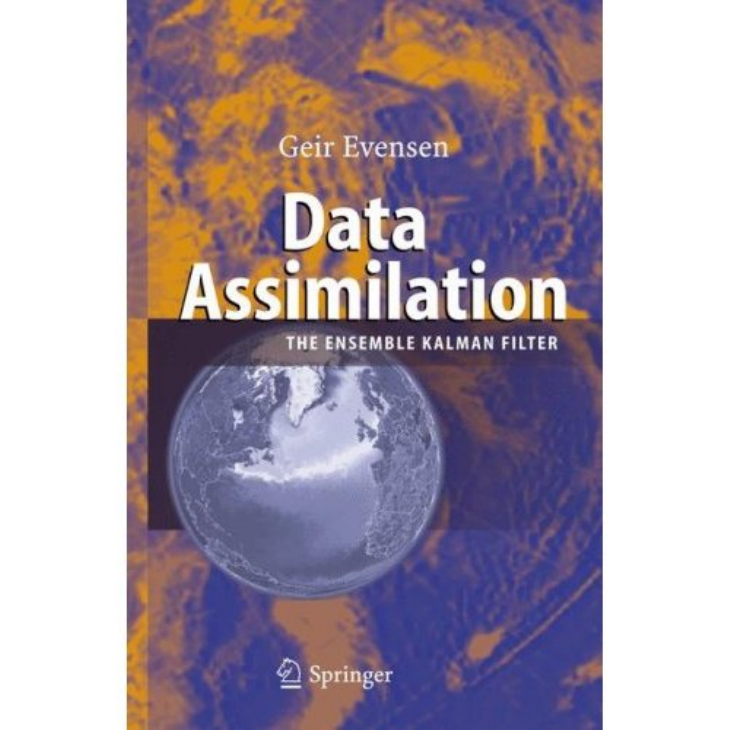

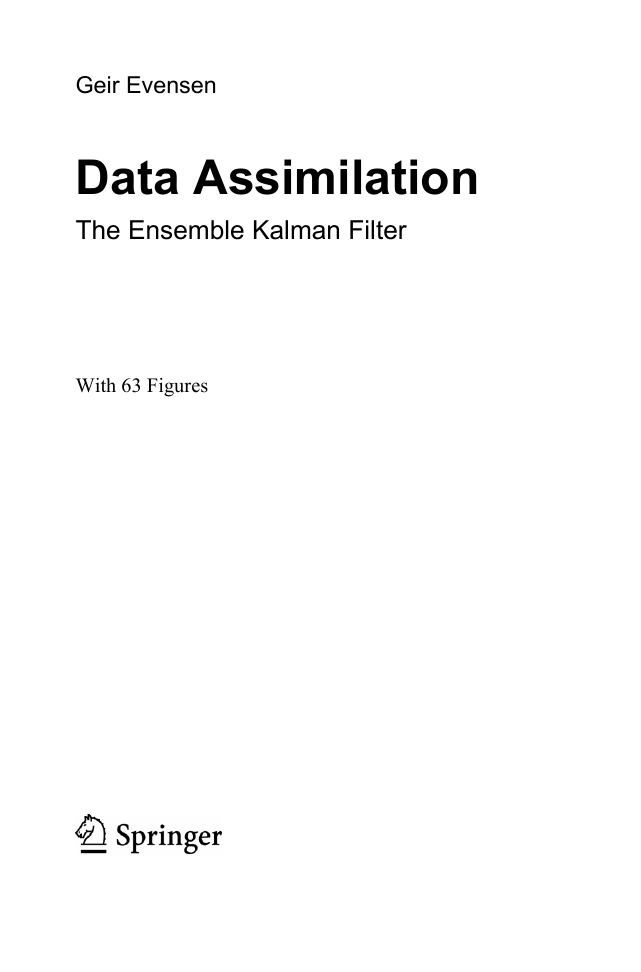
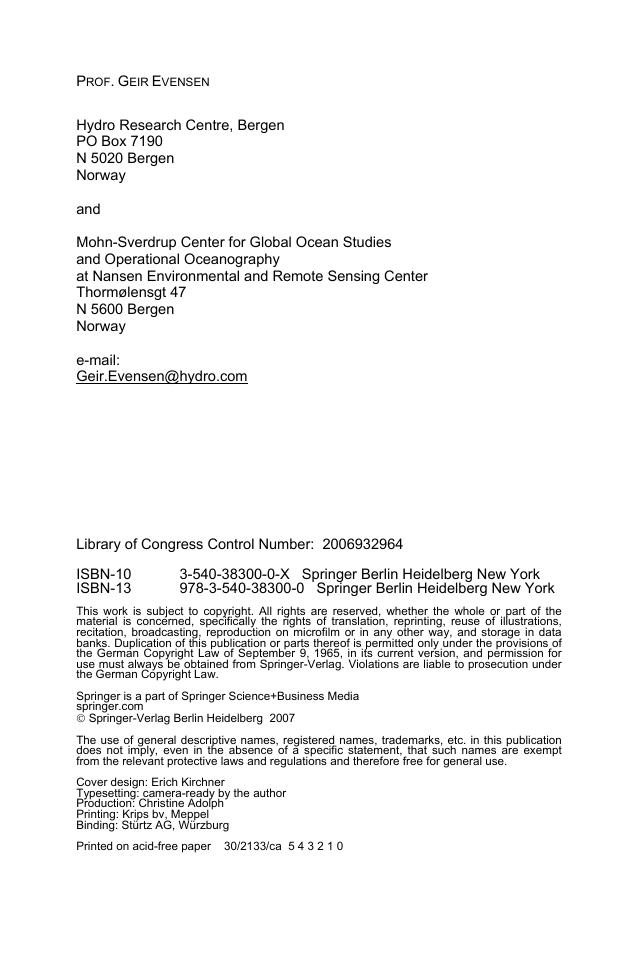

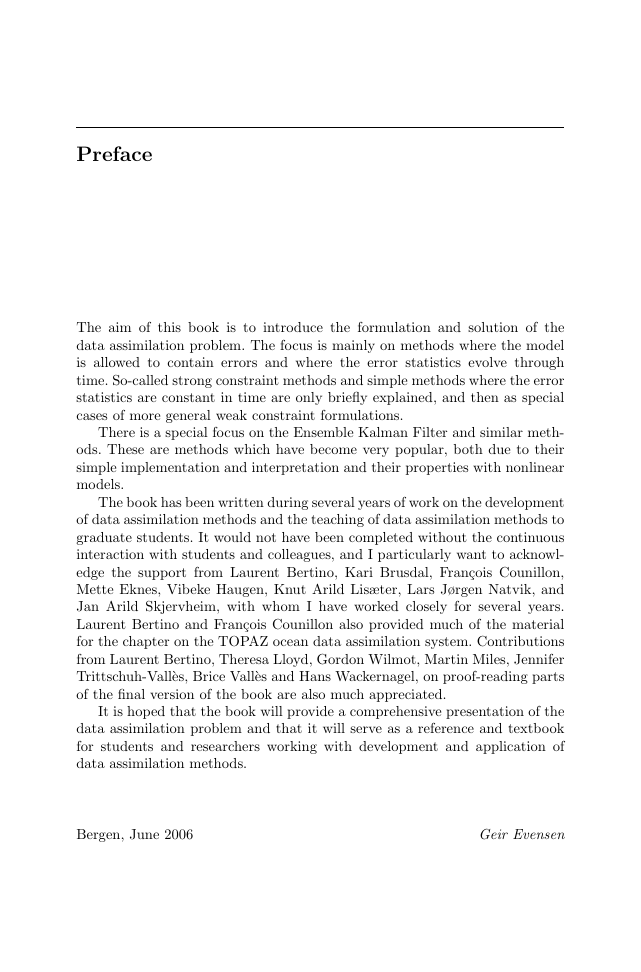
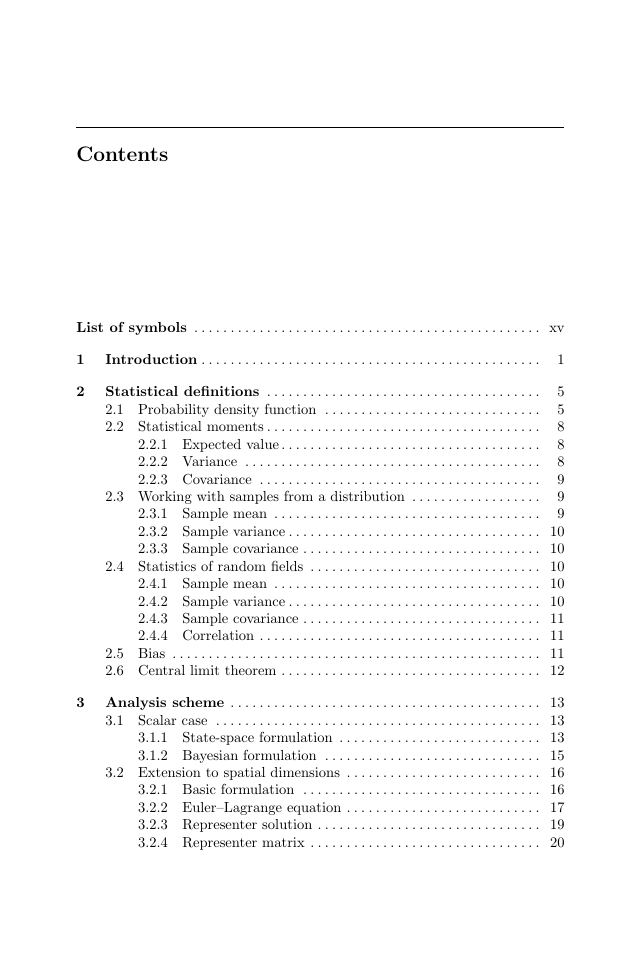
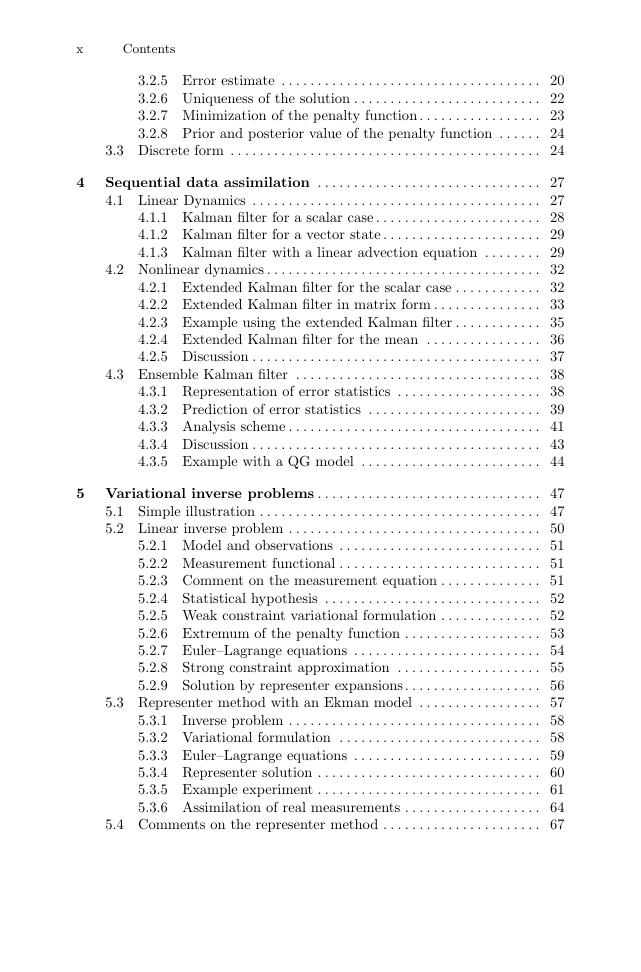








 2023年江西萍乡中考道德与法治真题及答案.doc
2023年江西萍乡中考道德与法治真题及答案.doc 2012年重庆南川中考生物真题及答案.doc
2012年重庆南川中考生物真题及答案.doc 2013年江西师范大学地理学综合及文艺理论基础考研真题.doc
2013年江西师范大学地理学综合及文艺理论基础考研真题.doc 2020年四川甘孜小升初语文真题及答案I卷.doc
2020年四川甘孜小升初语文真题及答案I卷.doc 2020年注册岩土工程师专业基础考试真题及答案.doc
2020年注册岩土工程师专业基础考试真题及答案.doc 2023-2024学年福建省厦门市九年级上学期数学月考试题及答案.doc
2023-2024学年福建省厦门市九年级上学期数学月考试题及答案.doc 2021-2022学年辽宁省沈阳市大东区九年级上学期语文期末试题及答案.doc
2021-2022学年辽宁省沈阳市大东区九年级上学期语文期末试题及答案.doc 2022-2023学年北京东城区初三第一学期物理期末试卷及答案.doc
2022-2023学年北京东城区初三第一学期物理期末试卷及答案.doc 2018上半年江西教师资格初中地理学科知识与教学能力真题及答案.doc
2018上半年江西教师资格初中地理学科知识与教学能力真题及答案.doc 2012年河北国家公务员申论考试真题及答案-省级.doc
2012年河北国家公务员申论考试真题及答案-省级.doc 2020-2021学年江苏省扬州市江都区邵樊片九年级上学期数学第一次质量检测试题及答案.doc
2020-2021学年江苏省扬州市江都区邵樊片九年级上学期数学第一次质量检测试题及答案.doc 2022下半年黑龙江教师资格证中学综合素质真题及答案.doc
2022下半年黑龙江教师资格证中学综合素质真题及答案.doc